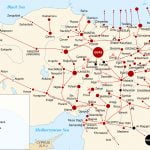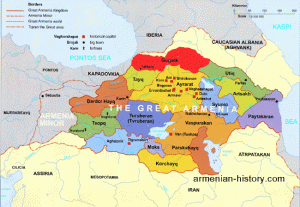
Samtskhe-Javakhk
JAVAKHK DURING THE ANCIENT PERIOD AND IN THE MIDDLE AGES Gugark (Գուգարք) – was the thirteenth of the fifteen provinces of Metz Hayk (Armenia Maior) Kingdom of

Hayasa (Hayasa-Azzi)
Origins and Identity of Hayasa Hayasa (Hayasa-Azzi), a mountainous kingdom near Lake Van, is mentioned in Hittite records dating back to the 14th century B.C.

The Kingdom of Urartu – Van
Kingdom of Urartu, Van, Ararat Kingdom – 9th-6th Centuries B.C. A Redoubtable Foe One of the great chapters in the history of Armenia is the
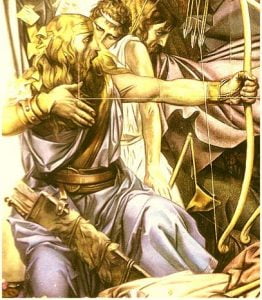
(legends) The Beginnings of Armenia
Period of Legend The Armenians have their full share of legends regarding their origin; legends in which spirits, gods and superhuman heroes, the forces and
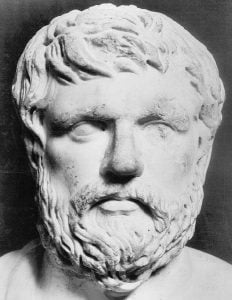
Armenia as Xenophon saw it
Retreat of the ten thousand Greek mercenary soldiers, ten thousand in number, who had been aiding the younger Cyrus of Persia against his brother Artaxerxes,

Alexander the Great and his Successors
The centralized government of Darius III began to disintegrate in the fourth century B.C. The provincial satraps werestriving for independence, and the Greeks were looking with covetous
Artashesian and Zarehian Kingdoms of Armenia
Artashesian and Zarehian Kingdoms of Armenia Decline and fall of Seleucid Empire Possessions in India were lost to the Seleucid Empire in 305. Fifty years later
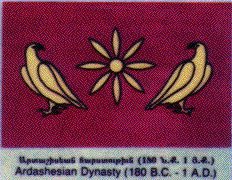
Artashesian dynasty
Artashesian Dynasty Artashes, founder of Armenian Independence The establishment of Roman supremacy in Asia Minor also brought about the independence of the two Armenian princes.

Tigran the Great
Tigranes the Great – Տիգրան Մեծ Tigran II, known as Tigran the Great (Տիգրան Մեծ), was one of the most powerful king in Armenian history,

Armenian Legions In Roman Army
Armenian Legions in Roman Army Legio Prima (I) Armeniaca, Legio Secunda (II) Armeniaca Legio Prima (I) Armeniaca – Armenian First Legion “Legio Armeniaca” translated from


